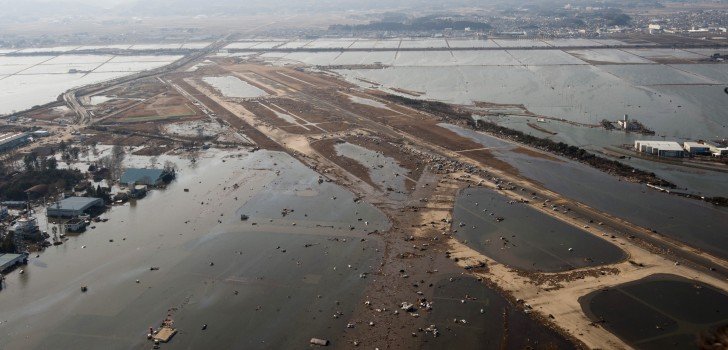In northeast Japan, more than 90,000 people have been forced to abandon their homes due to widespread flooding and landslides. Joso, a city north of Tokyo, was struck by a massive wall of water after the Kinugawa River burst its banks due to heavy rainfall.
People have been stranded on their rooftops with some being rescued by helicopter teams. At the present time, eight people are missing, and over 100 still need to be rescued from their rooftops. 15 people have thus far been reported injured. The damage was quite severe as entire homes and cars were carried away by the water. Power and transportation have also been heavily disrupted. The flood waters traveled as far as 5 miles from the river’s breach.
The flooding comes one day after a tropical storm brought winds of up to 78mph to central Aichi prefecture. Japanese forecasters have said that the rainfall was unprecedented for that area of Japan. In Tochigi, more than 19 inches of rainfall fell during a 24 hour period. This is twice the amount of rain that usually falls during the month of September in the area. Just last month, Typhoon Goni struck the Japanese island of Kyushu, killing one person while injuring 70 others.
The Ibaraki and Tochigi prefectures were the areas that experienced the most flooding. Both regions have been placed on the highest level of alert by Japan’s Meteorological Agency.
On average, Japan experiences 20 to 30 major storms per year. This most recent storm is the 18th major storm this year. However, because of the unexpected event of the Kinugawa bursting its banks, it was challenging to estimate exactly how severe the damage would be.
The Japanese noncombat military self-defense force is playing a major role in rescuing people. The force is receiving great praise due to their strong efforts. But while rescue operations are mostly going well, there exist concerns that Japanese storms have been increasing in strength in recent years. As a result, more storm preparations may be necessary in subsequent years.
Japanese Prime Minister Shinzo Abe told reporters, “The government will stand united and do its best to deal with the disaster by putting its highest priority on people’s lives.”
Stay Connected